Camassias are hardy, bulbous perennials that are really versatile and can be used for a variety of planting schemes, including in mixed and herbaceous borders, meadows and wildflower areas; alongside streams, riverbanks, ponds and woodland edges; or in containers.
You may also like
- Spring border planting design by Sarah Price
- The most beautiful spring flowers to plant
- A stunning spring pot design
Camassias are native to the damp meadowlands of North America where Camassias quamash was once grown as a foodstuff by Native Americans. The six predominantly blue, species range in height from the statuesque Camassias leichtlinii (1.2m) to the squatter Camassias quamash (30cm). Myriad blue tones range from deepest-indigo Camassias quamash ‘Orion’ to denim-blue Camassias leichtlinii ‘Blue Candle’.
Somewhere in between the starry-eyed singles and full doubles are gently ruffled blooms such as Camassias leichtlinii ‘Harlequin’. Delicate-pink Camassias leichtlinii ‘Pink Star’ is a rare, more recent phenomenon. Strap-like foliage is finer, more grass-like, on smaller specimens and a few have variegated leaves, such as Camassias quamash ‘Blue Melody,’ and Camassias leichtlinii ‘Sacajawea’.

How to grow camassias
Where to grow camassias
For best results, grow them in reliably moist soil and introduce a little shade if possible to ensure that the flowers hold longer. Water in their dormant period (July to December) if there are prolonged dry periods.
When to plant camassia bulbs
Plant dry bulbs out in autumn (September to November) in a damp, dappled site, 20cm deep or roughly two to three times their own depth and 6-10cm apart. Water in well. If they don’t flower, they’re too dry or overcrowded and ready for splitting.
Divide established clumps in July to August as new tips can start to emerge from September onwards. Replant at the same depth as the original clump. No need to feed.
When do camassias flower?
Flowering begins around mid to late April with Camassias leichtlinii subsp. suksdorfii Caerulea Group and culminates some eight to ten weeks later with starbursts of Camassias leichtlinii ‘Semiplena’ in late May to June.
13 of the best camassias to grow
Camassia leichtlinii subsp. suksdorfii ‘Alba’

Single, star-shaped, creamy-white flowers with lilac-tinged anthers. Flowers from late spring, its floriferous racemes held high on sturdy stems. Perfect for naturalising. 1.2m.
Camassia cusickii ‘Zwanenburg’

Plump flower buds burst into lavender-blue petals that wear a paler central stripe. A favourite of designer Chris Beardshaw. 75cm.
Camassia ‘Blue Heaven’

A mid-height, hybrid cross between Camassias leichtlinii subsp. suksdorfii and Camassias cusickii. The flower spike bears around 100 radiating pale, sky-blue, star-like flowers, the petals slightly recurved. 80cm.
Camassia leichtlinii subsp. suksdorfii Caerulea Group
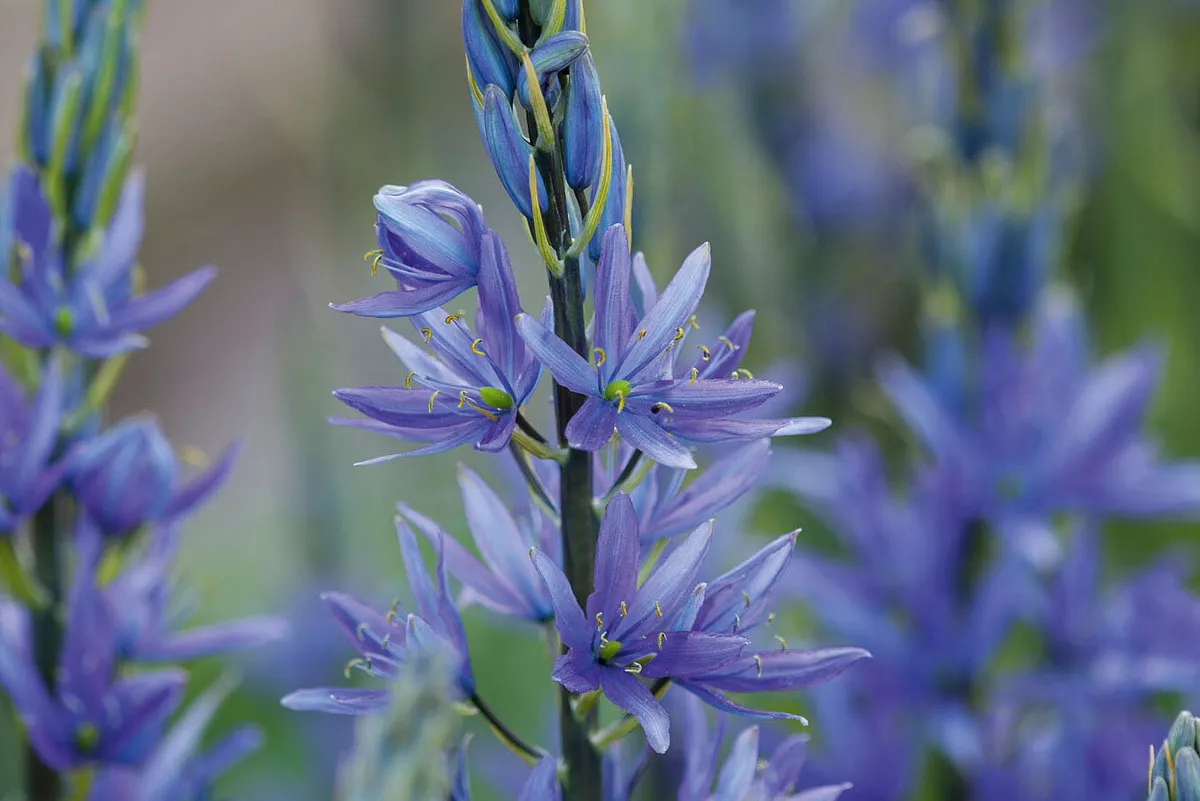
A good naturaliser; tall, statuesque and one of the first to flower, its cool-green buds burst into purply-blue stars, studded with sulphur-yellow stamens. 1.3m.
Camassia leichtlinii ‘Pink Star’
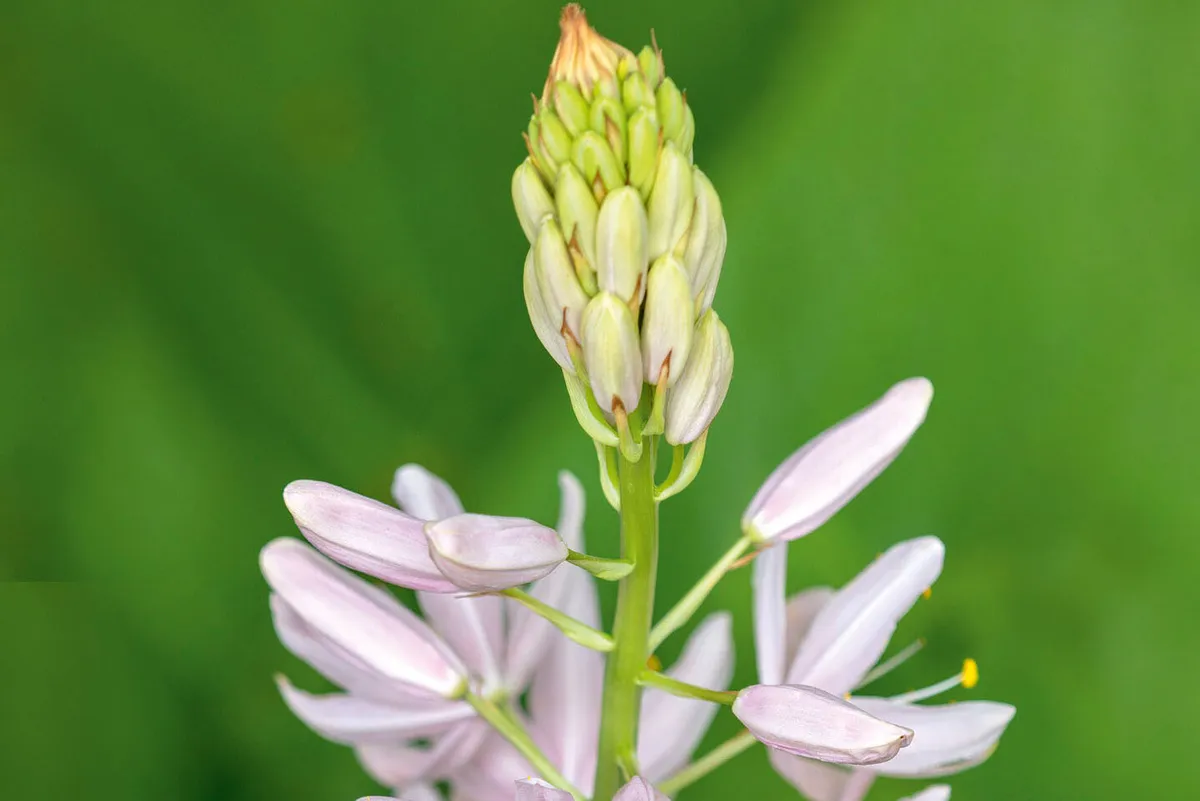
A relatively rare, delicate, pale pink, but increasingly available. Featured in Chris Beardshaw’s 2018 Chelsea gold-medal-winning and Best in Show garden. 75cm.
Camassia leichtlinii ‘Harlequin’

Softer sprays of creamy-white, ragged flowers replace trademark star-shaped florets. Borne on long flower wands, with sage-green stems. Rare. 90cm-1.2m.
Camassia leichtlinii ‘Semiplena’
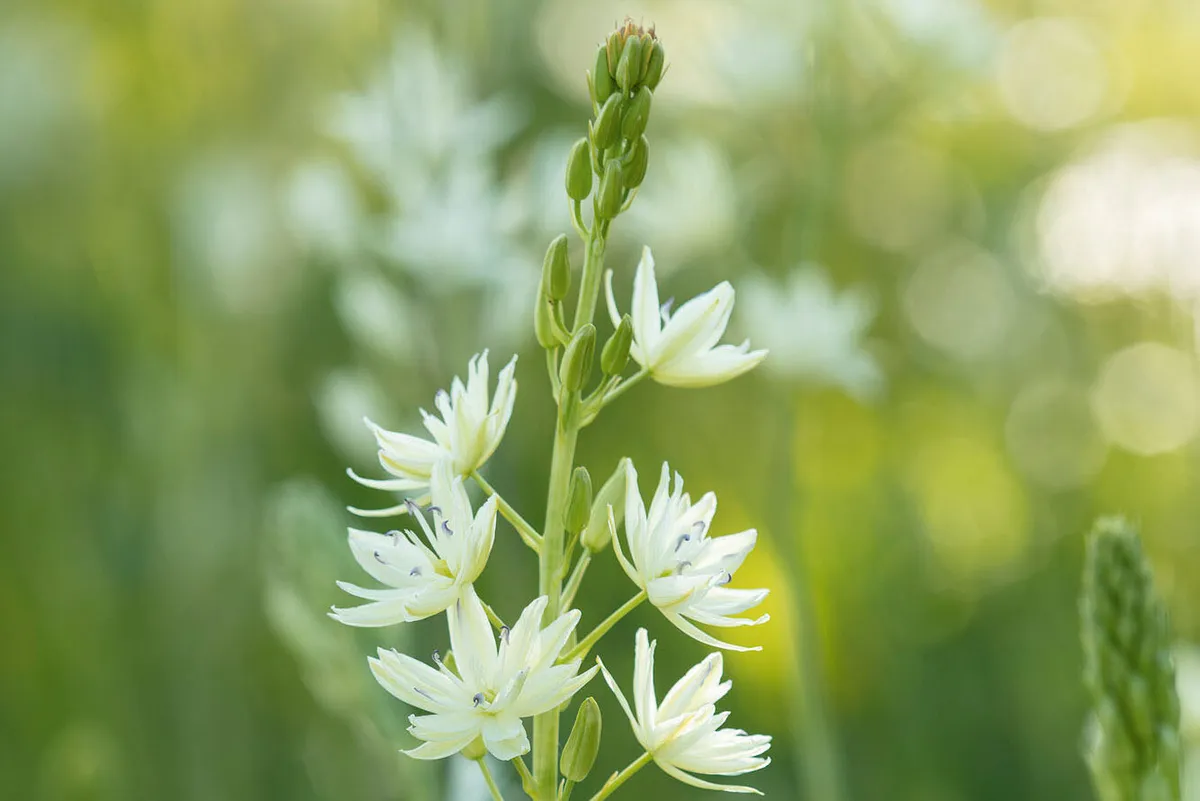
This white, double-petalled cultivar has sterile flowers that are the last and longest to bloom, right into June. 90cm.
Camassia quamash ‘Orion’

One of the deepest indigo blues available, its short stature and grass-like foliage is good for fronting mixed meadows, fringing ponds and in small containers. 35cm.
Camassia quamash ‘Blue Melody’
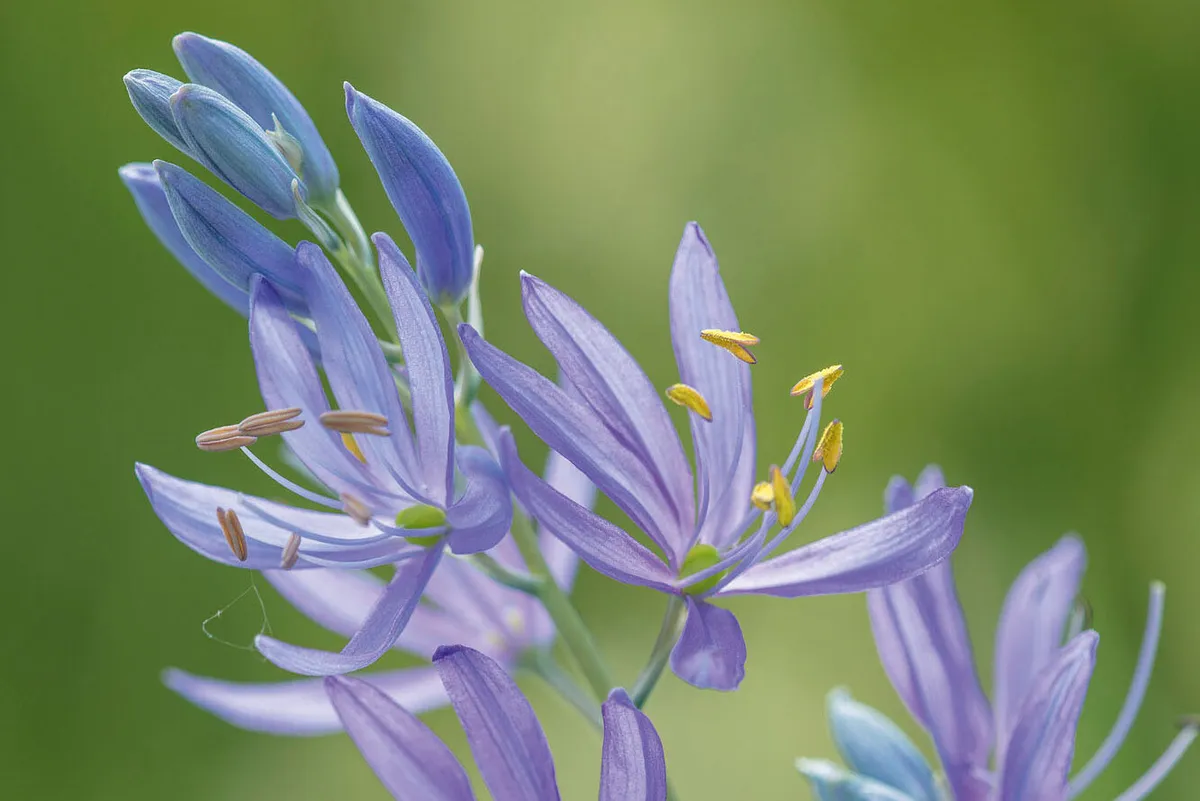
A short cultivar with pale-blue flowers and yellow anthers that pick up on the striped-yellow margins of its variegated foliage. Good for front of border, meadows or containers. 35cm.
Camassia leichtlinii ‘Blue Candle’

Huge, dense racemes of denim-blue flowers on sturdy stems. Great in mixed borders but also naturalises well. 75cm.
Camassia leichtlinii ‘Sacajawea’
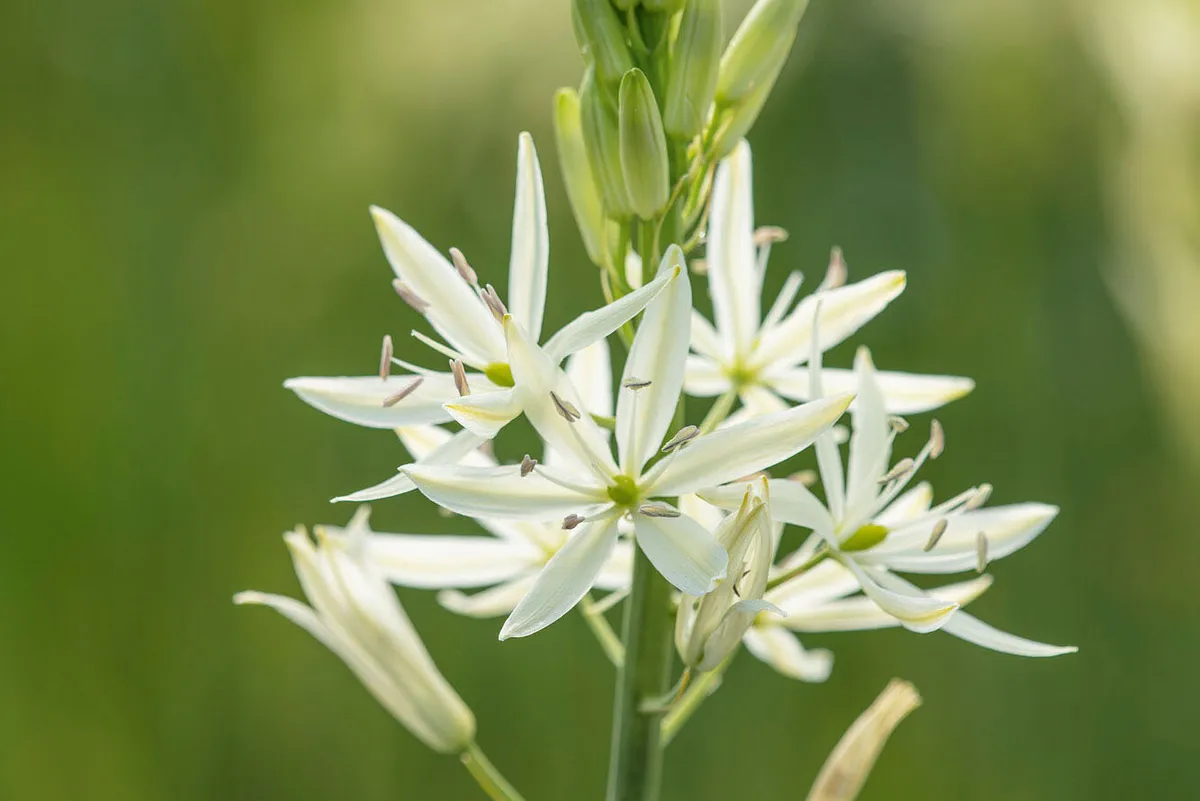
A creamy-flowered cultivar with distinctive, architectural, variegated foliage. 80cm.
Camassia leichtlinii amethyst seedling

One of six unnamed cultivars, bred by Stella, who is developing a range of pink-amethyst-hued cultivars. 70cm.
Camassia leichtlinii subsp. suksdorfii ‘Maybelle’
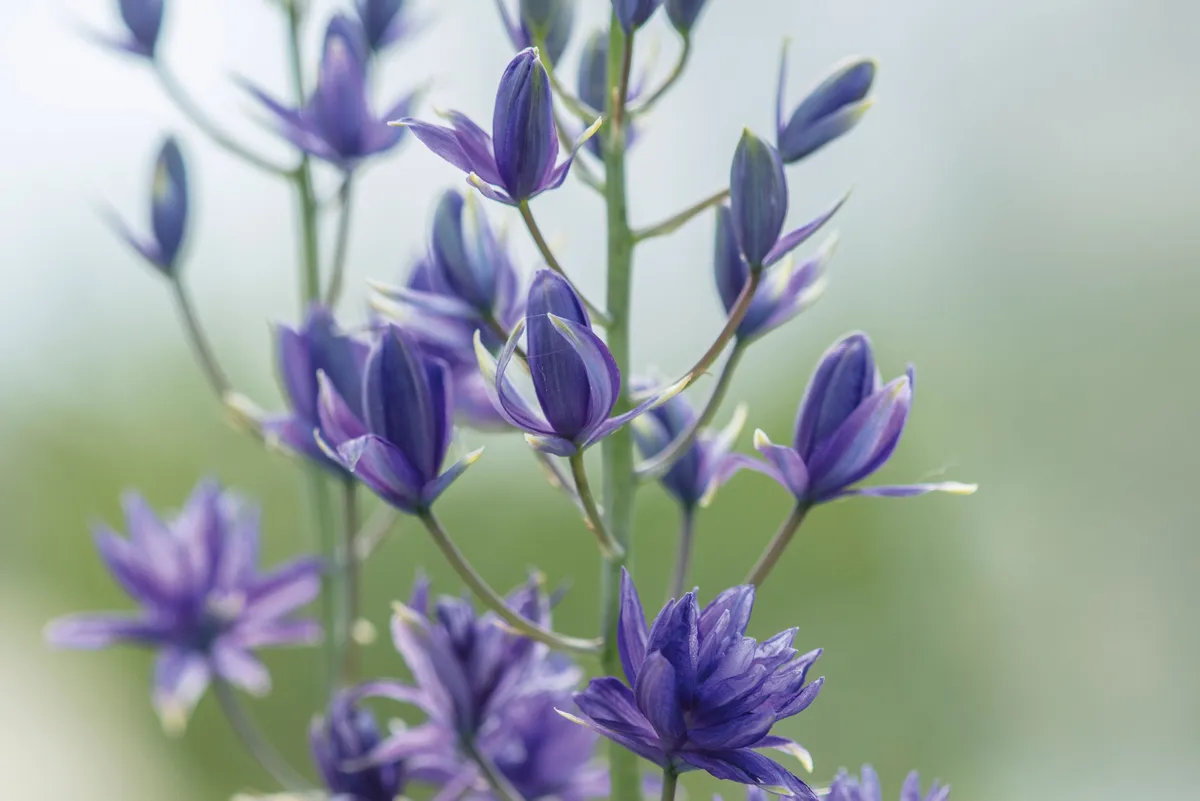
A recent introduction with sturdy but beautiful racemes of vivid-blue-tinted, purple flowers and golden stamens that bloom from May onwards. 60cm.
Take a look at our recommendations for other purple flowers.
Where to see and buy camassias
Hare Spring Cottage Plants, Church Orchard, Alne, York YO61 1RX, harespringcottageplants.co.uk
Visits to the nursery and gardens must be pre-arranged by emailing stella@harespringcottageplants.co.uk